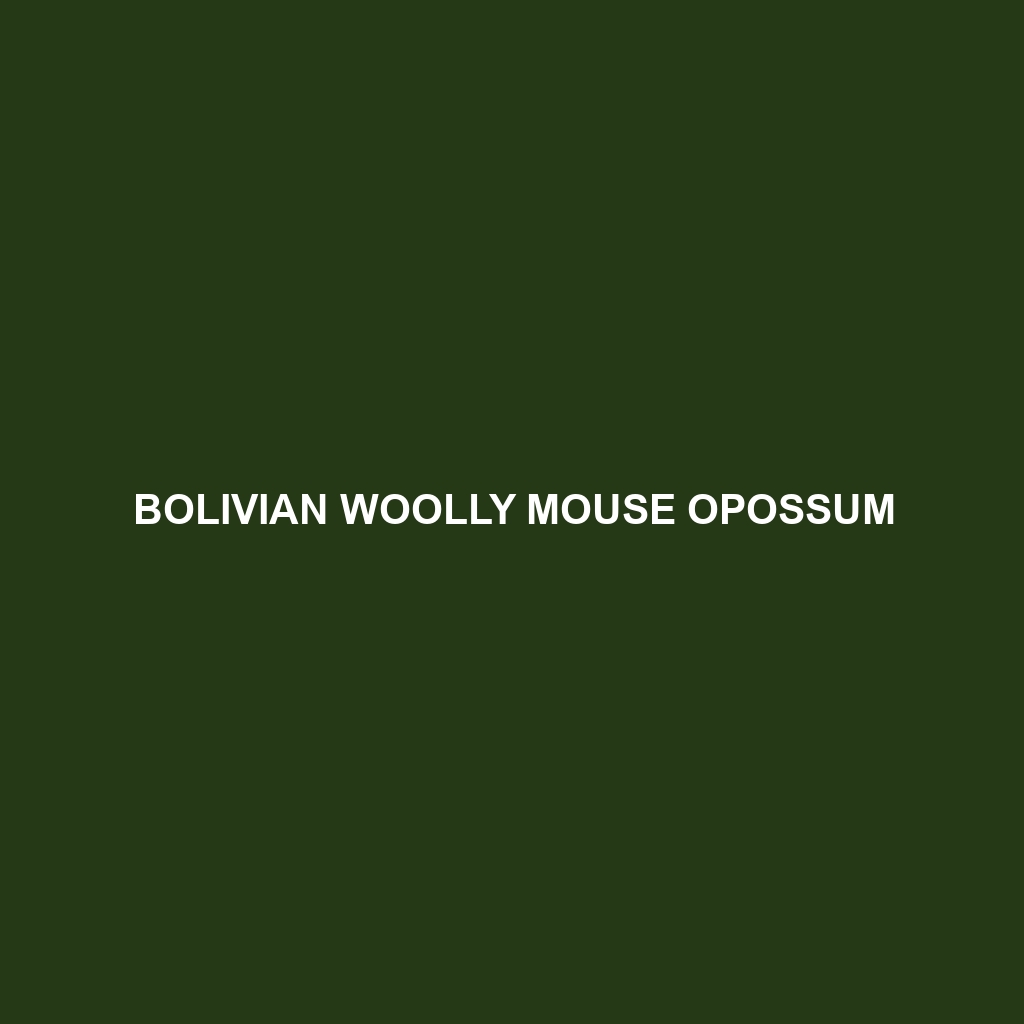Bolivian Woolly Mouse Opossum: An In-Depth Profile
The Bolivian Woolly Mouse Opossum (Micoureus constantiae) is a small, nocturnal marsupial native to the tropical forests of Bolivia and neighboring regions. Known for its dense, woolly fur and agile climbing skills, this elusive creature plays a significant role in its ecosystem as both a predator and prey.
Physical Characteristics
Size: The Bolivian Woolly Mouse Opossum is a small marsupial, typically measuring between 10-14 cm (4-5.5 inches) in body length, with a tail that is often longer than its body, extending up to 16 cm (6.3 inches).
Coloration: Its fur is soft and dense, usually a greyish-brown hue on the dorsal side, providing excellent camouflage in forested environments. The ventral side is lighter, often a white or pale grey.
Special Features: One of the most striking features of the Bolivian Woolly Mouse Opossum is its prehensile tail, which aids in climbing and balancing in the arboreal habitats it frequents. Additionally, this species possesses large, dark eyes, which enhance its night vision, and sharp claws for gripping tree bark.
Behavior and Ecology
Social Interactions: Generally solitary, the Bolivian Woolly Mouse Opossum is known to be a solitary creature, coming together only during the breeding season. It communicates through vocalizations and scent marking.
Feeding Habits: As an omnivore, this marsupial has a varied diet that includes insects, small vertebrates, fruits, and nectar. Its feeding habits help control insect populations and disperse seeds, contributing to forest regeneration.
Ecological Role: The Bolivian Woolly Mouse Opossum plays an important role in its ecosystem as both a predator of insects and small animals and as prey for larger predators like owls and snakes. It also contributes to seed dispersal, aiding in plant reproduction.
Habitat and Adaptations
Habitats: This species is primarily found in lowland and montane tropical forests, often in regions with dense canopy cover. It prefers humid environments and is usually located in areas with abundant vegetation.
Adaptations: The Bolivian Woolly Mouse Opossum is well-adapted to an arboreal lifestyle. Its prehensile tail and sharp claws make it an adept climber, while its keen night vision allows it to navigate and hunt effectively in the dark. Additionally, its woolly fur provides insulation against the varying temperatures of its mountainous habitats.
Conservation Status
The conservation status of the Bolivian Woolly Mouse Opossum is currently not well-documented, largely due to its elusive nature and the remote areas it inhabits. However, like many forest-dwelling species, it may be vulnerable to habitat loss and deforestation. Conservation efforts aimed at preserving tropical forests will be crucial in ensuring the survival of this species.
Fun Facts
Unique Tail Use: The Bolivian Woolly Mouse Opossum uses its prehensile tail not just for climbing, but also for carrying nesting materials and balancing while navigating through the trees.
Nocturnal Lifestyle: Being nocturnal, this opossum has adapted to a life in the dark, which helps it avoid many daytime predators and reduces competition for food resources.
Marsupial Motherhood: Like other marsupials, female Bolivian Woolly Mouse Opossums have a pouch where they carry and nurse their young until they are developed enough to survive outside.
In , the Bolivian Woolly Mouse Opossum is a fascinating and integral part of its ecosystem, showcasing a range of unique adaptations that enable it to thrive in the rich, biodiverse forests of Bolivia. Efforts to understand and protect this species will contribute to the broader conservation of tropical forest habitats.
